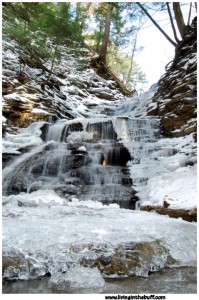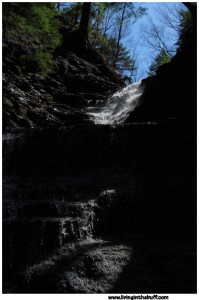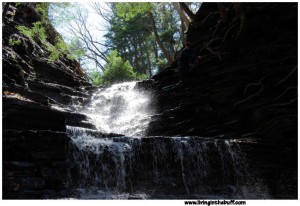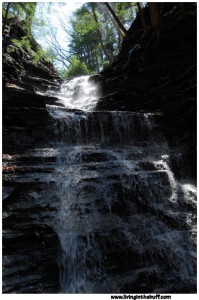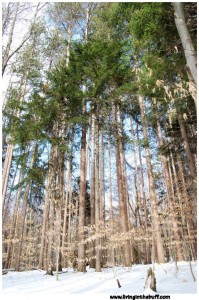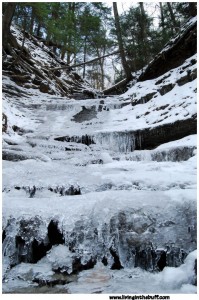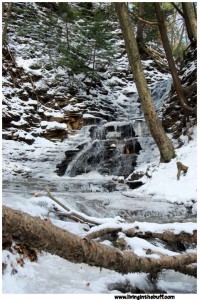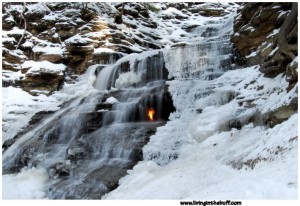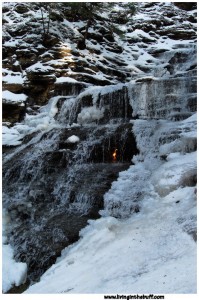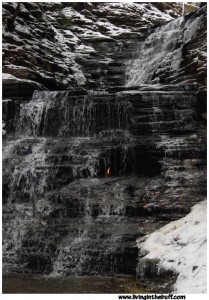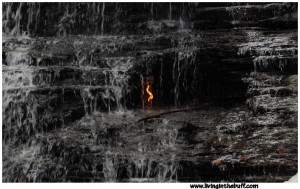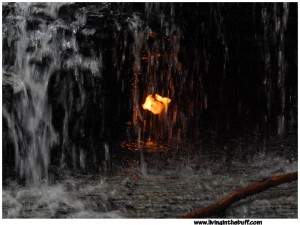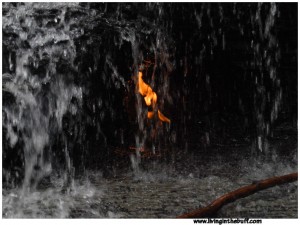Three Sundays of Hiking to the Eternal Flame....
Tag: eternal flame
Eternal Flame
Some images from today's hike at the Eternal Flame
The Worlds Most Beautiful Eternal Flame
This article was featured in Yahoo News, from LiveScience.com.
My flame making science headlines!
See the full article with credits here.
-=-=-=-=-=-=-=-=-=-=-=-=-=-=-=-=-=-=-=-=-=-=-=-
Nestled behind a waterfall in western New York state is an eternal flame whose beauty is only surpassed by its mystery. It is one of a few hundred "natural" eternal flames around the world, fed by gas seeping to the Earth's surface from underground, said Arndt Schimmelmann, a researcher at Indiana University in Bloomington, Ind.
But even within this rarefied group, this flame is special. Perhaps lit by Native Americans hundreds or thousands of years ago, it is fed by a new type of geologic process that hasn't been recorded before in nature, Schimmelmann told OurAmazingPlanet.
Typically, this type of gas is thought to come from deeply submerged, ancient and extremely hot deposits of shale, a kind of rock. Temperatures have to be near the boiling point of water or hotter to break down the large carbon molecules in shale and create smaller molecules of natural gas, Schimmelmann explained.
A curiosity "nobody believed in"
In this case, though, the rocks that feed the flame are only warm — "like a cup of tea" — as well as geologically younger than expected, and shallow, Schimmelmann said. Those findings suggest the gas is being produced by a different process, whereby some sort of catalyst is creating gas from organic molecules in the shale, he said.
"This mechanism has been proposed for many years, but it was a curiosity that nobody believed in," Schimmelmann said. "We think there's a different pathway of gas generation in this location and that there probably is elsewhere as well." If that's true, and gas is naturally produced this way in other locations, "we have much more shale-gas resources than we thought," he added.
Originally, Schimmelmann and his colleague Maria Mastalerz, of the Indiana Geological Survey, were tasked by the U.S. Department of Energy to estimate the total amount of methane that seeps out of the ground in parts of the eastern United States. To help, they recruited Giuseppe Etiope, a researcher at the National Institute of Geophysics and Volcanology in Italy, and world expert on natural gas seeps and eternal flames, Schimmelmann said.
A flame eternal
Etiope guided the researchers to the aforementioned eternal flame in Chestnut Ridge Park in western New York, calling it "the most beautiful in the world," Schimmelmann said. They also looked at a "permanently burning pit" in Cook Forest State Park in northwestern Pennsylvania, although this eternal flame is not as special because it’s supplied by an old gas well, Schimmelmann said. The team reported their findings on the New York eternal flame in a study published in the May issue of the journal Marine and Petroleum Geology.
Their results were consistent with estimates that about 30 percent of all methane emitted worldwide comes from natural sources such as these gas seeps. When possible, it can actually be beneficial to set fire to these gas seeps to create "eternal flames." Fire converts methane to carbon dioxide, which traps about 20 times less heat than methane in the atmosphere, Mastalerz told OurAmazingPlanet.
However, "macro seeps" that can be lit and form eternal flames remain rare. In most cases, gas percolates through soil — where methane-eating bacteria convert it into carbon dioxide, Schimmelmann said — or it comes out in a location that can't sustain combustion. In the case of the New York flame, gas percolates in a naturally hollowed-out chamber, where the flame flickers eternally.
The New York gas seep also features the highest concentration of ethane and propane of any seep in the world, according to the study.
Eternal Flame
Although the flame wasn't lit - it often does go out due to too much water. But it was still a great day for a hike. Alex from Yelp.com and I took advantage, and did a bunch of clean-up on the trails while we were out there.
It is so disappointing how people just leave trash in a natural area such as this. Next weekend I'm going out with a garbage bag and doing some serious cleaning.
I am so disappointed how neglectful people are to this place...
Little Treasures
As mentioned in the previous post, one of our goals on Sunday was to find the Eternal Flame. Quaintly nestled in a natural, shallow cave in the shale walls behind a waterfall, the flame constantly burns fueled by a naturally occurring reservoir of methane. It doesn't look like it could possibly just naturally be there. The entire area looks like it was professional landscaped and carved, but in this ravine of shale walls, the Earth has intricately carved what it would probably take a team of expensive designers and architects to otherwise create.
The nice thing about this little natural wonder is you can still walk right up to it. Unlike so many other amazing natural occurrences in the world, man has not fenced it off, placed it behind glass or in any way tried to protect us from ourselves while claiming to be protecting us from it.
The whole area is left as natural as possible. Fallen trees remain fallen and become natural obstacles in the hike. The ravine walls are not in any way groomed or screened; the creek bed is littered with fallen rock and shale, and lined with other water fall channels where run-off naturally flows.
Unlike other natural occurrences people will travel to see, no path has been paved to make it accessible to everyone. To get to it, it is a natural hike - 1.3 miles down a hill side and through a creek bed. In some areas, concrete slabs have been buried into the hill side to make it easier to traverse some of the steeper areas. In winter, as we discovered, these steps turn into hazardous slides of ice and snow, actually making it more difficult.
The fact that we either pave nature to see nature or close it off for fear of people getting hurt by it annoys me. It is nice to be able to walk within feet of this dancing flame and enjoy the simple pleasure of it.
And the fact it exists where it does is equally as wondrous. In an area that can see several feet of snow fall at once, that can have thousands of gallons of run-off water flowing through this area, that has at times seen hurricane strength winds blow through... despite it all, this little flame keeps burning.
Once down to the flame, you have two choices on how to get back:
1. Back up the same trail you just hiked down, or
2. Up the side of a tree-lined ravine
Sarah took the path less traveled. I hiked back up the trail. I'll try climbing the roots in the Spring time when they aren't as icy.
As I mentioned in my previous blog entry, the trail was icy enough. I took several good falls on my ass and slid down icy hillsides a number of times. When we were leaving, we saw a couple getting out of a car with New Jersey plates. Probably in town, looking for something to go see and they were told about the Flame. They were wearing designer jeans, woolen coats, boots with heels and looked more prepared for a walk to a restaurant downtown than a hike through a creek bed. We gave them a brief warning about how icy it is, that they will need to hike through a creek bed - through the water - and wished them luck on their adventures.
I wonder how they made out.
I wonder if they got out....





























